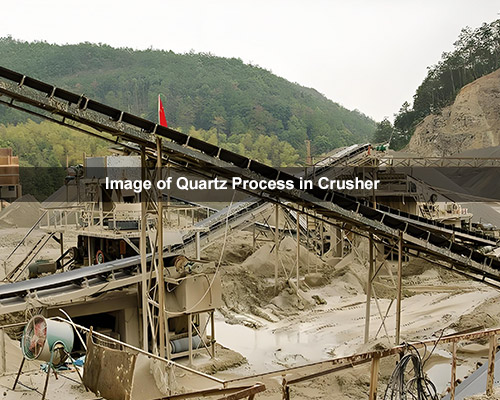Quartz
Last Updated :2025-10-29 Views:103
Image of Quartz Process in Crusher
Quartz, one of the hardest minerals, requires specialized crushing processes to achieve the desired particle size for industrial use. This article provides an in-depth look at the quartz crushing process, including key stages, machinery used, and best practices for efficient processing.

Understanding Quartz Crushing Process
1. Primary Crushing (Jaw Crusher)
- Purpose: Reduce large quartz blocks (up to 1m) into smaller fragments (~150mm).
- Equipment: Jaw Crusher (best for high compressive strength materials).
- Process: Quartz is fed into the crusher, where moving jaws apply pressure to break it.
2. Secondary Crushing (Cone Crusher/Impact Crusher)
- Purpose: Further reduce fragments to ~20–50mm.
- Equipment: Cone Crusher (for uniform particle shape) or Impact Crusher (for softer quartz).
- Process: Quartz is fed into secondary crushers for finer fragmentation.
3. Tertiary Crushing (VSI Crusher/Sand Maker)
- Purpose: Produce ultra-fine quartz sand (~3–5mm).
- Equipment: Vertical Shaft Impact (VSI) Crusher.
- Process: High-speed rotor impacts quartz, creating well-shaped sand particles.
4. Screening & Washing
- Purpose: Remove impurities & separate quartz by size.
- Equipment: Vibrating Screen, Sand Washer.
- Process: Crushed quartz is screened and washed for purity.
Key Machines Used in Quartz Crushing
- Jaw Crusher – Best for primary crushing.
- Cone Crusher – Ideal for secondary reduction.
- VSI Crusher – Produces high-quality quartz sand.
- Vibrating Screen – Ensures precise particle sizing.
Benefits of Proper Quartz Crushing
- Higher production efficiency
- Lower wear on crusher components
- Better product shape for industrial use
- Reduced energy consumption
Conclusion
Understanding the quartz crushing process ensures optimal equipment selection and high-quality output. Whether for glass production, construction, or electronics, proper crushing maximizes quartz’s industrial potential.









